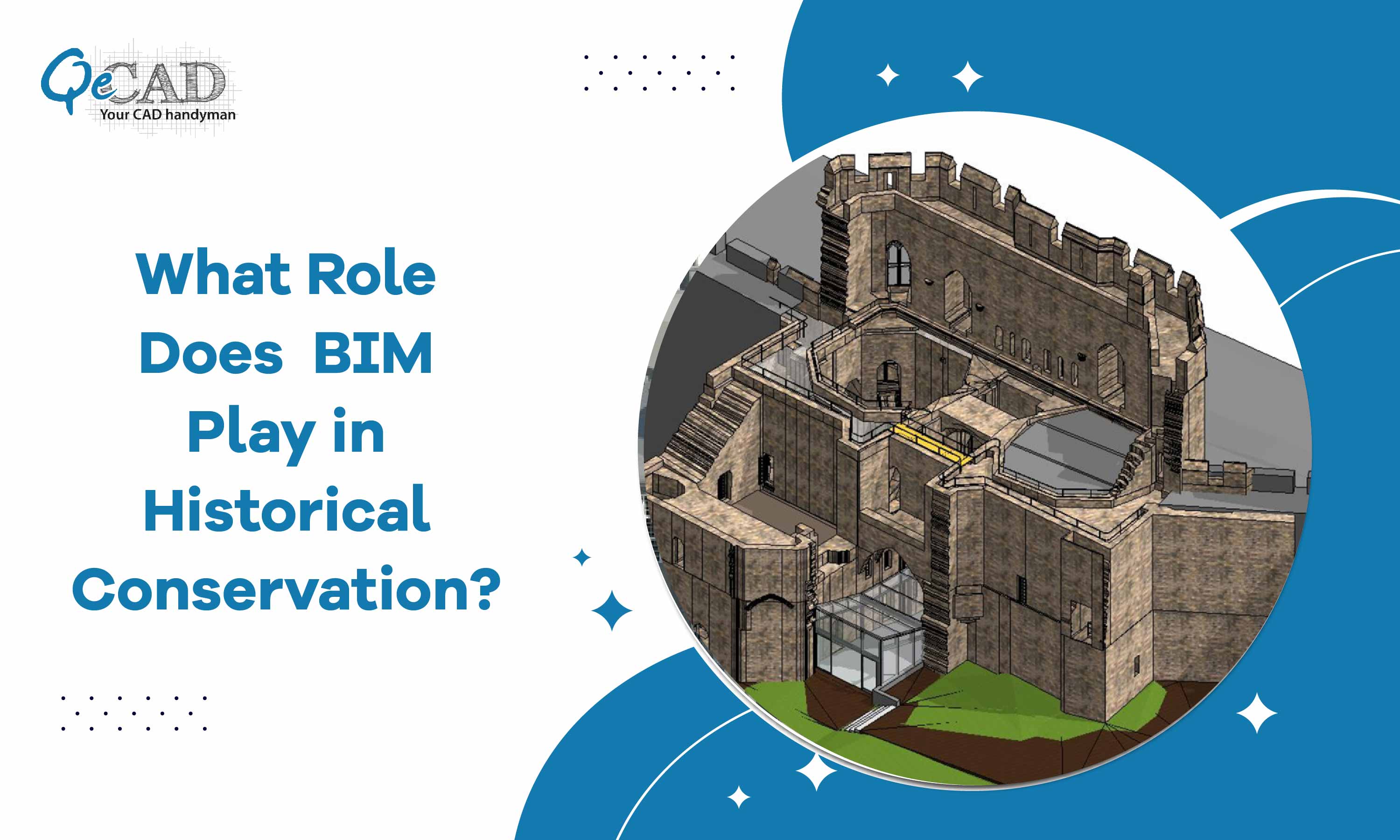
The conservation of historical sites remains crucial to our beautiful cultural heritage. These sites are not only the architectural marvels but also hold stories of societies from the past. However, the biggest challenge is to maintain these structures while also ensuring that their historical integrity remains intact for the future generations. This is where Building Information Modeling (BIM) falls in to the picture. It emerges as a crucial tool in the field of heritage conservation.
Understanding BIM in Heritage Conservation
BIM is a digital model showcasing the physical and functional dimensions of a facility or a structure. Initially BIM was used just for modern and large-scaled construction projects but recently it has found its application in the heritage conservation too. This is due to its ability to document as well as manage the complex data associated with the historical structures. Unlike traditional 2D drawings, BIM creates a 3D model that incorporates the geometry, spatial relationships, geographic information, and quantities. This model is a central repository for all the information related to the structure thereby enabling accurate visualization, analysis, and decision-making throughout the conservation process.
Challenges in Heritage Conservation
Conserving historical buildings requires a careful equilibrium between preserving the authenticity as well as ensuring structural stability and safety. Many historical structures do suffer from deterioration due to age, weathering, and inadequate maintenance over the years. Additionally, the scarcity of accurate documentation and the complexities of integrating modern amenities without compromising historical significance poses significant challenges to conservation efforts.
Role of BIM in Historical Preservation
- Accurate Documentation: BIM facilitates the creation of precise as-built models of historical buildings, capturing the details in the form of point clouds using the advanced Scan to BIM Services that might be missed in the traditional surveys. This documentation includes not only architectural elements but also structural systems, materials, and historical significance such as artwork or murals.
- Simulation and Analysis: Through BIM, conservationists can simulate structural behaviour under different conditions and also analyse the potential impacts of interventions. This allows in making informed decisions that reduces the risks to the structure thereby enhancing its longevity.
- Collaborative Planning: BIM encourages interdisciplinary collaboration among architects, historians, conservationists, and engineers. It allows stakeholders to work together seamlessly thereby ensuring that preservation goals are met without compromising on safety or authenticity.
- Virtual Reconstruction: In the cases where parts of a structure are missing or damaged, BIM enables virtual reconstruction based on historical records and archaeological findings using apt Construction Drawing Services. This digital restoration aids in visualizing the building in its original state, helping conservationists plan appropriate interventions.
- Maintenance and Management: Once a historical building is documented in BIM, it becomes easier to plan and schedule maintenance activities. BIM can integrate with facilities management systems to track changes over time and ensure ongoing preservation efforts are effective.
Case Studies and Success Stories
Below are several notable projects that have successfully employed BIM in heritage conservation:
- St. Pancras Renaissance Hotel, London: BIM was used to restore this Victorian masterpiece, ensuring that modern amenities were seamlessly integrated while preserving its historical grandeur.
- Angkor Wat, Cambodia: BIM has been instrumental in documenting and managing this UNESCO World Heritage site thereby aiding in the conservation of its ancient temples and intricate carvings.
- Palace of Westminster, UK: BIM is being used for the ongoing restoration of this iconic Gothic Revival building, supporting extensive repair and renovation efforts.
Challenges and Future Directions
Despite its benefits, using BIM in heritage conservation is not without challenges. These include the high cost of technology implementation, the need for specialized skills among conservation professionals, and the ethical considerations of altering historical structures even with the aid of digital tools.
With the penetration of BIM technology, the advancements such as enhanced reality capture and artificial intelligence holds a promising future for improving the accuracy and efficiency of the conservation efforts.
Conclusion
BIM represents a transformative approach to heritage conservation by offering unparalleled capabilities in terms of documentation, analysis, and collaborative planning. By utilizing BIM, conservationists can safeguard our cultural heritage for future generations while also ensuring that the historical structures continue to inspire and educate us about our shared past.
